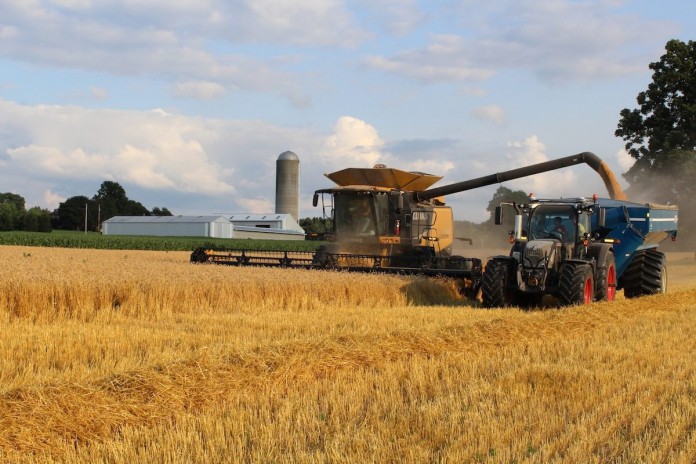The market mover this week is surely the World Agricultural Supply and Demand Estimates report due out in the middle of the day June 12.
Yes, once again I get the dreaded privilege of talking about a report that is not here yet to a readership that will have access to it by the time this arrives in the mailbox.
The first take on the prospective report is that it will be a non-event. That is, there are a few tweaks expected, but since they are expected, they are already probably “in the market.” One confusing aspect to the report is that the U.S. Department of Agriculture will probably continue to lag behind South American government agencies in the estimates of their crops.
Both Brazil and Argentina have had late-season crop problems and have been forthright about reporting sharply smaller crops.
The USDA, on the other hand, has been slow to make corrections to the expected South American crop size and have lagged behind in adjustments. This is not much different than their methodology for estimating U.S. crops: As a crop is stressed and the producers think it is shrinking in volume, the USDA is slow to make changes.
There is a method for this as I see it. They don’t want to be caught underestimating the crop and then having to raise it, because they will be charged with price manipulation.
Unfortunately, this results in report days where the analysts are stuck with two numbers — the estimate of crop size and then the estimate of what USDA says the crop size is. That results in a volatile market that is afraid to trade either number.
For the most part, the methodology is good, but it leaves the market with a sort of impression of what could be later. I don’t know how a trader on the CBot manages that information.
Crop progress
Another perceived problem with USDA numbers right now is that many observers believe we are cutting the crop significantly (just a few bushels from the 180.8 bpa USDA may be using this week) with a central Corn Belt drought. There is not a lot of talk yet about this outside of the effected area, but some analysts mention it.
Those same people assume USDA will ignore it until the problem is better quantified or unless it gets worse. The reality may be that there is enough corn outside that area that is better than normal to offset the losses in the dry area.
In fact, the Crop Progress Report from the USDA June 10 shows that Ohio, for example, has better corn condition ratings than the nation as a whole. Ohio has 65% of the crop rated good and 15% rated excellent. That total is significantly better than the 58% rated good and 15% rated excellent of the nation as a whole. And, it should be noted, that those are better ratings than normal for the average year.
Interestingly, the Ohio and U.S. planting progress estimates are virtually identical. Both Ohio farmers and U.S. farmers have 95% of the crop in, and at this date, we are the same as done. We were at 90% last week, while the U.S. was at 91%. We are actually ahead of normal, which is 86% for Ohio. The U.S. average for the date is 95%.
I am stuck wondering what acres are not planted, being this report is for June 9. Are these acres unplanted because people wanted to finish the soybeans, or are these acres planted after first cut hay, or what? Did that many acres represent land that late tile drainage or land clearing was taking place on, or did they get rain nobody else did?
I do remember planting 30 acres of corn July 4 on new ground that was not cleaned up until then, but I just planted corn so I could put 4 pounds of Atrazine on it to start to get it into production. Half of it had been in grass, and I needed a head start on weed control. I actually got corn harvested, too, but I can’t brag about the yield, and I am embarrassed to mention what it was. I remember I let it dry in the field until a nice day in January.
Estimates
Looking at expected numbers from the USDA, one prereport estimate is looking for a corn crop of 14.845 billion bushels. This may be reduced more if the USDA buys into yield reductions from a wet spring in many areas.
The classic problem may emerge, with wet soils limiting root growth, which makes the crops more vulnerable to dry weather. This may mean that the 2024 ending stocks will be lowered slightly, from 2.022 billion bushels to maybe 1.984 billion. That is not a big enough change to shake the market, but it is in the right direction. Remember, we need to get carryout closer to one billion bushels to really shake out a rally.
We expect very little change to soybean numbers. The hope there might be that the South American crops are reduced, so we could see better exports, which would come off the carryout.
World wheat crops are still a little unknown. The French crop has improved enough that they have traded their Paris futures down six sessions in a row. The Chicago cookie wheat futures have been down nine days in a row.
Wheat gave us a great second chance to price, with July futures up to $7.20 at the end of May. We are 84 cents off that now, with 20 cents of that coming June 10.
Last week or the week before, I forget which, I strongly recommended selling out old and new wheat. That 84 cents makes me think that even this blind hog can find an acorn once in awhile.












